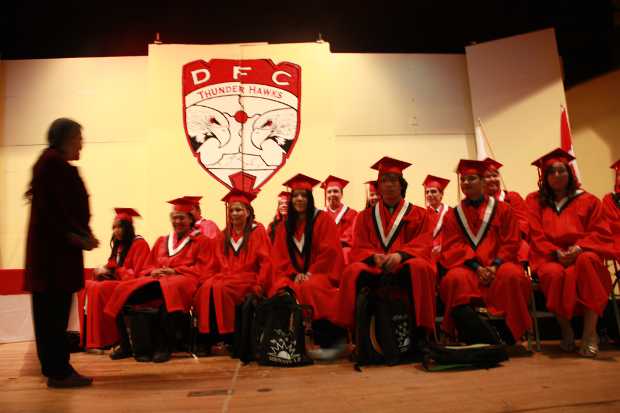
THUNDER BAY – Making sure that Anishinaabe students from Northern Ontario graduate from High School is an important goal. The needs of the northern communities, families and students have been at issue for years.
A new commentary published by Northern Policy Institute, After the Healing: Safeguarding Northern Nishnawbe First Nations High School Education proposes immediate action be taken to ensure a brighter future for First Nations students attending First Nations band-operated high schools.
A Thunder Bay coroner’s inquest report into the deaths of seven First Nations students, issued on June 28, 2016, has motivated new public calls for concrete, meaningful changes in Indigenous education, particularly in Northern Ontario.
The new report by Paul W. Bennett, takes a look at the history of First Nations education through the legacy of residential schools and analyzes and assesses the impact of First Nations-controlled high schools on the educational progress, well-being, and life chances of youth in the Nishnawbe Aski Nation.
By taking a closer look at the real challenges and hard-won successes of two Northern Nishnawbe Education Council (NNEC) schools, Dennis Franklin Cromarty High School (DFCHS) in Thunder Bay, and its sister school, Pelican Lake First Nations High School (PFFNHS) near Sioux Lookout, Bennett makes several policy recommendations, including the call for a full transition to First Nations control of education through Community- School Based Management, entrusted in Indigenous education authorities such as NNEC.
“Investing in NNEC high schools remains the best way to capture the true “Learning Spirit,” to embrace a more holistic, community-based philosophy of lifelong learning, to raise student performance levels, and prepare graduates for healthier, more satisfying and productive lives,” states Bennett.
The report also sheds light current funding disparities, and recommends policy makers proceed immediately to address the funding gap facing First Nations schools, specifically the severe financial challenges facing the two NNEC high schools in Northern Ontario.
“Given a funding gap of 25 to 30 per cent per student and the adverse media attention, the label of “failing” schools does not seem to square with the facts,” states Bennett. “Closing the funding gap is imperative if we are ever to achieve equity in education and better outcomes for First Nations students.”
Bennett offers a public policy response, urging policy-makers to:
- Close the funding gap for NNEC and NAN schools;
- Design, fund and build Dennis Franklin Cromarty (DFC) transition lodgings to be known as the Student Living Centre;
- Re-build and expand student support services to smooth the transition to city/town life;
- Establish a Race Relations Commissioner and officers in cities and larger towns with sizable populations of First Nations youth and students; and
- Expand and fortify ‘Student Success’ curriculum initiatives based upon Indigenous ways of knowing and learning.
The complete commentary, including all recommendations is available on our website at www.northernpolicy.ca







